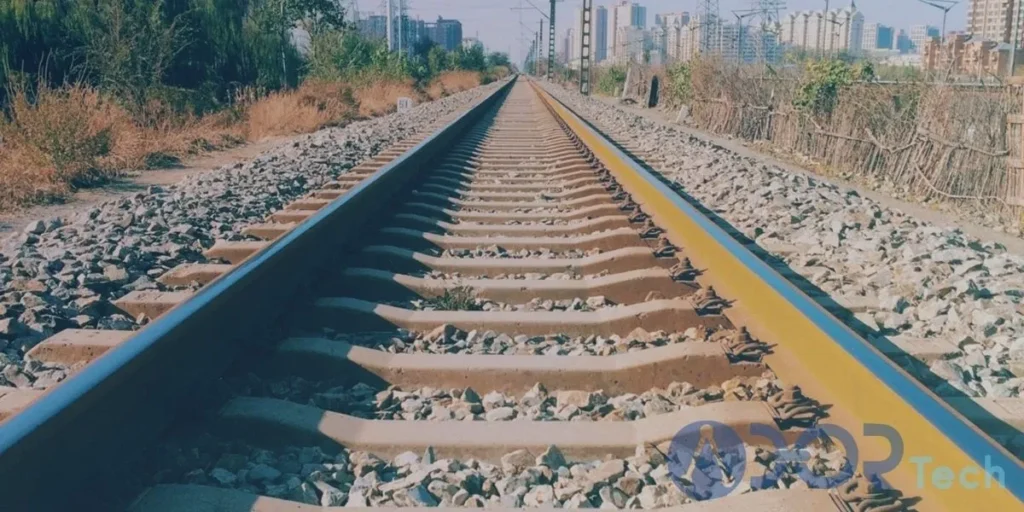Tamping machines are essential equipment for maintaining railway tracks around the world. Over 800,000 miles (1.4 million km) of track globally rely on ballast tampers to ensure smooth, consistent, and safe rail travel. These machines use hydraulic and mechanical processes to pack and align ballast under railway tracks to provide stability. Tamping is needed frequently – some segments of busy railways may require tamping every few days, while others may go years between tamping operations. Without these machines, train tracks would quickly become misaligned and uneven from the stress of heavy rail traffic.
Modern tamping machines utilize automation and remote monitoring to deliver precision track alignment. Thanks to automated sensors and hydraulic systems, tamping can correct track deficiencies within acceptable tolerances. Some tamper-liners can operate up to 15 mph while aligning track and packing ballast. The best tamping machines are also versatile to handle a variety of track widths and rail sizes. Advanced tamping machines can tamp ties, level track, correct horizontal alignment, and pack ballast in a single pass. With programmable logic controllers, today’s lining machines practically drive themselves along miles of railway according to preset alignments.
The evolution of tamping machine technology has directly contributed to safer, more reliable train operations worldwide. Railway engineers and crews rely on tamping machines to maintain the intricate balance of stability and smoothness that allows trains to operate at high speeds. With cargo and passenger trains only getting heavier and faster, tampers will continue to be an essential engineering workhorse, keeping rail transport on track.
Keep your track bed in top condition using a powerful “ballast profiling machine” designed for efficient shaping, sweeping, and profiling.

What Are Tamping Machines and Why Are They Important?

Railway tamping machines are track maintenance equipment designed to pack and align the stone ballast beneath railroad ties using mechanized hydraulic rams. The tamping process squeezes and levels the ballast foundation to provide stability and correct track geometry alignment. Precise track alignment maximizes safety by reducing derailment risks from buckling or shifting tracks. Frequent tamping is essential on busy rail lines that experience constant stress from heavy trains. Rail tracks would warp and become misaligned from the dynamic load over time without regular tamping maintenance to smooth out imperfections.
See also: “Different Types of Railway Maintenance Equipment“
Tamping machines simplify an otherwise labor-intensive process to maintain ideal track geometry. Modern tamping machine technology employs automation and remote sensors to achieve acceptable levels, alignment, and ballast compaction tolerances. Built-in measuring systems analyze track geometry as the machines operate. Tamping at higher speeds improves efficiency while minimizing rail traffic disruptions. As rail systems prioritize heavier loads and higher speeds, tamping technology is indispensable for proactive track maintenance.
History and Evolution of Tamping Machines
The first tamping machines emerged in the late 19th century as manual devices to pack ballast under railroad ties. Mechanical advantage amplified the force that could be applied compared to hand tools. Hydraulic tamping machines were introduced in the 1950s, allowing more precise and continuous tamping thanks to pressurized water pumps powering the tamping bank. Tamping technology improved with electro-hydraulic systems and computerized controls in the 1980s-90s.
GPS and digital sensors now allow fully automated operation and data capture. Modern tamping machines profile the track during operation to make real-time adjustments. Continued innovation focuses on achieving faster work speeds while maintaining precision. The capabilities of tamping machines have increased dramatically from the first manual tampers, leading to excellent railway safety and efficiency.
How Tamping Machines Work
Railway tamping machines utilize a mechanical tamping unit known as a tamping bank to pack and realign ballast under railroad ties. The tamping bank consists of oscillating pick-shaped tines that are hydraulically driven into the ballast in a vibrating motion. As the machine moves down the track, the tamping tines plunge repeatedly into the ballast, squeezing and compacting the stones underneath the ties using dynamic vibration. This packs any loose ballast and creates a firm, even foundation. At the same time, the tamping action can shift the ties vertically or horizontally as needed to correct alignment. The intensity and position of each can be adjusted based on sensors that monitor the exact tie and rail levels.
The tamping bank is housed in a frame containing stabilizing components to keep the machine centered on the track during operation. Some tamping machines utilize a frame that reaches across multiple tracks for tamping efficiency. The machine chassis has railroad wheels to move the tamper down tracks under its power at speeds up to 15mph. Modern tamping machines have an operator cab with computerized controls to oversee automated tamping. Built-in measuring systems with lasers and inertial sensors profile the track geometry, allowing the tamping to continuously adjust for a smooth, precisely aligned track. Remote monitoring capabilities even allow tamping operations to be managed from a central office.
The Tamping Process Step-by-Step

Here is an overview of the tamping process:
1- The tamping machine is positioned at the start of the section of the railway track needing maintenance.
2- The operator initiates the automated tamping sequence through the machine’s control system.
3- The tamping tines hydraulically descend and vibrate, plunging into the ballast beneath the ties. This packs and squeezes the stones with dynamic vibratory force.
4- The tamping bank can tamp multiple ties simultaneously across the entire width of the track in one downward plunge.
5- After completing tamping on a track section, the machine automatically advances to the next section.
6- Built-in sensors and analysis systems evaluate the current track geometry and determine if any alignment adjustments are required before tamping the next section.
7- Laser, optical, and inertial sensors continuously scan the track profile, providing real-time measurement data.
8- Based on this data, the tamping tines automatically adjust their positioning to align, level, and square the next section.
9- The sequence of tamping, advancing, geometry analysis, and alignment adjustment repeats continuously down the full length of the track.
10- Once the track achieves the proper profile and alignment per specifications, the tamping intensity decreases for final stabilization.
11- The operator conducts a visual check and reviews the machine’s tracking data to inspect the finished work.
12- The tamping machine detaches from the serviced track and moves to the next scheduled maintenance section.
See also: “Ballast Regulator Machine Operating Principles“
Essential Components and Technology of Modern Tamping Machines

Modern tamping machines utilize advanced technologies and components to maintain optimized railway tracks. The central systems and parts that make tamping machines highly effective include:
Tamping Units
The tamping units, also known as tamping banks, are the core working machinery of tamping machines. The tamping units consist of pick-shaped tines that are hydraulically driven to vibrate at a high frequency, enabling them to pack and squeeze the ballast under the ties. Tamping units now utilize computer-controlled automation to adjust tine vibration intensity and impact depth for precision results.
Sensors and Measurement Systems
Contemporary tamping machines have advanced sensors and laser technology to accurately assess track geometry. These machines gather critical data on track aspects like cross-level, can’t, alignment, and profile through optical sensors, pinpoint-accurate lasers, and inertial measurement units. This invaluable information enables the tamping units to dynamically adjust alignment on the fly during operation. All this data is continuously fed to onboard computing systems, which refine the tamping process in real time to achieve optimal track geometry.
Operating Control Systems
The cabin of today’s tamping machines contains operating controls that include touchscreen displays, control panels, and onboard computers. These enable the programming of optimal tamping patterns and tracking of key metrics. Many tamping machines allow remote operation and monitoring from a central control office. Automated processes significantly reduce the need for operator intervention due to intelligent control systems.
Stabilizing Technology
Stabilizing and gauging components are installed on tamping machine frames to keep the equipment centred and level on the track during operation. The most advanced stabilization technology allows tamping at higher speeds by employing gyroscopes and hydraulic counter-pressure. This provides enhanced stability when tamping and vibrating under dynamic conditions.
Propulsion Systems
Tamping machines have drivetrain systems that enable self-propelled movement along rail tracks. Many tamping machines have a dual-mode drivetrain that can disengage the railroad wheels and engage standard rubber tires. This allows self-deployment across both rail tracks and roadways. The propulsion systems allow tamping up to speeds of nearly 15 mph for productive maintenance.
Safety Benefits of Proper Tamping
Regular tamping maintenance by qualified railway crews creates safer conditions for train transit. Properly tamped tracks minimize derailment risks, a significant cause of rail-related accidents. Compacted ballast and stabilized ties prevent buckling and misalignment that can lead to disastrous derailments. Optimized track geometry from precise tamping also allows for higher-speed rail traffic.
The dynamic forces exerted by high-speed trains mandate that tracks be able to handle the loads. Effective tamping controls variations in track stiffness that could unsettle trains at speed. In addition, well-tamped railway foundations prevent erosion issues from water drainage alongside rails. Excessive vibration from trains can erode soil without consistent tamping to stabilize ballast. Poor drainage raises the risks of track deformation and destabilization over time. Comprehensive tamping programs thus address immediate and long-term rail safety.
Railway tamping crews conduct additional inspections while operating on tracks, acting as another failsafe. The essential maintenance performed by tamping machines will continue supporting safe, reliable railways as trains achieve ever-higher velocities and track usage increases.
Importance of Precision Alignment and Track Stability
Achieving precise alignment and stable, uniform track geometry is the primary goal of the tamping process. The slight imperfections in railroad tracks from continual dynamic loads can lead to severe safety hazards if left uncorrected—even small amounts of misalignment or instability compound at high speeds to destabilize trains. Precision tamping combats factors like lateral and vertical shifts, track inclination, and inconsistent track stiffness.
The automated tamping machines make subtle millimeter-level adjustments to align tracks smoothly. The exact precision tamping required depends on train frequency, tonnage, and velocity along a section. Heavily used, high-capacity lines require the most meticulous precision tamping. Laser-guided automation in modern tampers prevents human error during alignment.
Meanwhile, optimal tamping pressure and vibration packs ballast for optimum stability and drainage without over-compressing. Proper stabilization minimizes future track deformation. Precision alignment and firm stability are the foundations of safe, reliable railroad infrastructure. Railway engineers rely on the capabilities of modern tampers to consistently deliver this fine-tuned track geometry maintenance.
The Future of Tamping Machines and Technology
Ongoing innovation aims to make tamping machines more automated, precise, and efficient. Next-generation tampers will integrate augmented visualization to assist operators. Drone and camera integration may provide enhanced supplemental perspectives of track conditions. Tamping units could become more adaptable with interchangeable tool heads for multi-purpose capabilities. Improved stabilization technologies will enable tamping at higher line speeds above 15mph.
More durable materials and designs will also lengthen the lifespan of key tamping machine components. Tamper manufacturers also foresee expanded data integration to optimize maintenance planning and asset management. As railway usage increases in the future, exceptionally high-speed lines, the demands for track maintenance will rise concurrently. Further tamping machine advancements in automation, rapidity, durability, and versatility will prove critical to meet the infrastructure needs of modern rail transportation.
Conclusion
Tamping machines are vital tools that provide the essential foundation of every railway system. With the capabilities of tamping machines to align, stabilize and maintain track geometry, railroads would be safe and impractical. The evolution of tamping technology has directly contributed to the development of modern high-speed rail networks. Automation, remote operation, and real-time geometry analysis have transformed contemporary tampers into precisely controlled maintenance powerhouses.
While early tamping relied solely on manual labor, current tampers practically ran along miles of the track according to sophisticated programming. However, dedicated operators remain at the heart of effective railway maintenance—the future promises ever-smarter tamping machines that keep rail transport safe as trains continue getting faster and heavier. While the specifics of tamping machinery may change, its importance for smooth, aligned tracks will only increase as railway usage grows worldwide.




